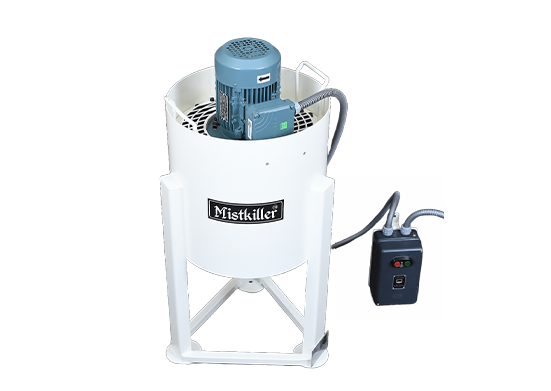A Legacy of Excellence in Air Pollution Control
Since its inception in 1996, Powertech Pollution Controls has been at the forefront of the air pollution control industry. For nearly three decades, our company has specialized in designing and manufacturing high-quality equipment for the capture and control of fumes, smoke, dust, and mist from various industrial applications. Our commitment to innovation and excellence has established us as a trusted partner across multiple industries, including automotive manufacturing, heavy engineering, light engineering, food production, and pharmaceuticals.
Our Mission: Creating a Greener World, One Solution at a Time
At Powertech Pollution Controls, our mission is clear: to create a greener world, one solution at a time. We believe that every industry can operate efficiently while minimizing its environmental impact. By providing custom-built air pollution control solutions, we aim to help our clients achieve cleaner, safer work environments, thereby contributing to a sustainable future.
Our mission drives everything we do. From the initial consultation to the final installation and beyond, we are dedicated to delivering solutions that not only meet but exceed our clients’ expectations. Each product we develop is designed with the specific needs of the application in mind, ensuring optimal performance and reliability.
Our Vision: Leading the Way in Air Pollution Control
Our vision is to be the global leader in air pollution control solutions, recognized for our superior products, exceptional service, and unwavering commitment to sustainability. We envision a future where every industrial operation can effectively manage air pollutants, ensuring healthier environments for workers and surrounding communities.
To achieve this vision, we continually invest in research and development. Our team of experts stays abreast of the latest advancements in technology and industry trends, ensuring that our solutions remain at the cutting edge. By integrating smart technologies and sustainable practices into our products, we are paving the way for a cleaner, greener future.
Our Product Line: Tailored Solutions for Every Need
Powertech Pollution Controls offers a comprehensive range of air pollution control equipment, each designed to address specific industrial challenges. Our product line includes:
The FumeKiller is a versatile fume extractor designed to handle fumes generated from processes such as welding, soldering, and oil mist collection. Its advanced electrostatic filtration system ensures efficient removal of contaminants, providing a cleaner and safer work environment. Whether you need a soldering fume extractor or a welding fume extractor, the FumeKiller is the ideal solution.
The DustBag is an advanced dust collector designed for applications such as grinding, buffing, and lathe work. Its high-efficiency filtration system captures dust particles at the source, preventing them from spreading within the workspace. The DustBag is available in various configurations to suit different industrial needs, making it a reliable choice for any dust collection requirement.
The MistKiller is a powerful mist collector designed to extract water-based coolant mist from CNC processing applications. Its centrifugal separation technology ensures effective mist removal, maintaining a clean and safe working environment. The MistKiller is essential for industries that require precise and reliable mist collection solutions.
The DustBag Reverse-Pulsed-Jet is a maintenance-free dust collection system designed for fine dust extraction from processes such as food production. Its self-cleaning feature ensures continuous operation without the need for manual intervention. This system is ideal for industries that demand high performance and minimal downtime.
Our Commitment to Quality and Service
At Powertech Pollution Controls, quality and service are at the core of our operations. We pride ourselves on the superior build quality of our products, ensuring durability and long-term performance. Each piece of equipment undergoes rigorous testing to meet the highest standards of quality and safety.
Our commitment to service extends beyond the sale. We offer comprehensive post-sales support to ensure that our clients get the most out of their investments. Our team of experienced technicians is always ready to provide assistance, from installation and maintenance to troubleshooting and upgrades.
Custom Solutions for Unique Challenges
Every industrial application is unique, and we understand that a one-size-fits-all approach does not work for air pollution control. That’s why we offer custom-built solutions tailored to the specific needs of our clients. Our team works closely with each client to understand their requirements and develop a solution that delivers optimal results.
From designing bespoke fume extractors to creating specialized dust and mist collectors, we have the expertise to handle any challenge. Our custom solutions not only address the immediate air pollution issues but also enhance overall operational efficiency.
Partnering for a Sustainable Future
Sustainability is at the heart of our mission and vision. We believe that by helping industries manage their air pollution, we are contributing to a healthier planet. Our products are designed to minimize energy consumption and reduce environmental impact, aligning with global sustainability goals.
We are also committed to continuous improvement. By investing in new technologies and adopting best practices, we strive to make our solutions even more efficient and eco-friendly. Our goal is to help our clients achieve their sustainability objectives while maintaining high levels of productivity and safety.
Join Us on Our Journey
As we continue to innovate and expand our product offerings, we invite you to join us on our journey toward a greener world. Whether you are looking for a reliable fume extractor, an efficient dust collector, or a powerful mist collector, Powertech Pollution Controls has the solution you need.
Explore our product range and discover how we can help you create a cleaner, safer work environment. Contact us today to learn more about our custom solutions and how we can partner with you to achieve your air pollution control goals.
Together, we can create a sustainable future, one solution at a time.




